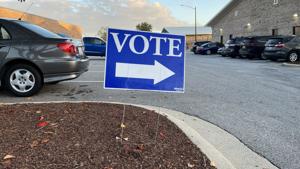Kaiser Health News
Readers Call on Congress to Bolster Medicare and Fix Loopholes in Health Policy

Thu, 29 Feb 2024 10:00:00 +0000
Letters to the Editor is a periodic feature. We welcome all comments and will publish a selection. We edit for length and clarity and require full names.
Occupational Therapists Change Lives. CMS Must Better Support Them.
Occupational therapists are critical in helping patients adjust to new circumstances, empowering them with the tools they need to overcome barriers and regain control over their lives. Whether you’re transitioning from homelessness into a home (“In Los Angeles, Occupational Therapists Tapped to Help Homeless Stay Housed,” Jan. 24) or relearning how to do everyday tasks following a stroke, OTs are key to patients’ care plan.
But the critical care provided by OTs is being threatened by another year of payment cuts imposed by Medicare, our nation’s health care program for people age 65 and up. Many older patients treated by OTs access insurance coverage through Medicare, which typically reimburses providers at a lower rate than private insurers. And now, with payment cuts that went into effect on Jan. 1 — despite warnings and backlash from lawmakers, patients, and providers — OTs are struggling to deliver care with lower Medicare payment.
Investing in occupational therapy improves health outcomes for patients, has the potential to reduce the burden on hospitals and other health care clinicians, and keeps individuals healthy and independent. Medicare’s payment cuts only compromise the ability of providers to deliver comprehensive, compassionate care. Medicare must recognize the long-term patient benefits occupational therapy has to offer.
Luckily, Congress is considering a bill that would reverse these harmful payment cuts. The Preserving Seniors’ Access to Physicians Act of 2023 (HR 6683), would reverse the cuts that went into effect on Jan. 1, alleviating financial stress for occupational therapists and preserving patient access. I strongly urge lawmakers to prioritize and protect occupational therapy services and immediately pass HR 6683 for America’s Medicare patients.
— Doug Fosco, an occupational therapist practicing at Two Trees Physical Therapy in Ventura, California
An assistant professor at Ontario’s Western University weighed in on X.
Great to see the role of #occupationaltherapy with persons who experience #homelessness profiled in @latimes. Thanks #deborahpitts for your work in LA with @USC and #skidrowhousingtrust . Check it out @CAOT_ACE @OSOTvoice ! @CAEHomelessness https://t.co/S5s9jhgoxI
— Carrie Anne Marshall, PhD (@cannemarshall) January 24, 2024
— Carrie Anne Marshall, Sydenham, Ontario
Congress Must Finish the Job on Site-Neutral Payments
There’s an obvious solution to rein in government spending and patient out-of-pocket costs: Pay identical prices for identical care (“In Fight Over Medicare Payments, the Hospital Lobby Shows Its Strength,” Feb. 13).
As a community oncologist, it is clear to me how Medicare favors hospitals by paying more for services provided in hospital outpatient departments (HOPDs) than the same care delivered in community-based facilities. For example, last year, Medicare paid over 2.5 times as much in an HOPD as in a free-standing office for drug administration services. It’s not just Medicare paying too much; patients also face higher out-of-pocket costs for care provided in HOPDs. If the Lower Costs, More Transparency Act is signed into law, cancer patients would immediately pay less for treatments like chemotherapy.
One unintended consequence of current payment disparities is consolidation. To leverage higher reimbursements, health systems scoop up independent practices — a growing problem that is particularly pronounced in oncology. From 2008 to 2020, 435 community cancer clinics closed, while 722 contracted with or were acquired by hospitals. This consolidation is reducing patient access, particularly in rural areas, where many independent clinics operate small satellite sites that tend to be the first to close when hospitals acquire a community-based practice.
It’s time for Congress to finish the job through bills like the Lower Costs, More Transparency Act and the SITE Act, which would help level the playing field once and for all.
— Scott Rushing, Vancouver, Washington
The chief marketing officer of SKYGEN cut to the chase on X.
In the battle to control healthcare costs, hospitals are deploying their political power to protect their bottom lines. https://t.co/97r502KrpM
— Donald H. Polite (@DonaldPolite) February 15, 2024
— Donald H. Polite, Milwaukee
The ‘Gold Card’ Shuffle
Prior authorization, by definition, creates delays in care and bureaucratic barriers for physicians — which is why it is so troubling that many insurers now require prior authorization for large categories of procedures with no evidence of overuse or inappropriate use. With health insurers increasingly implementing questionable prior authorization policies, state and federal lawmakers are racing to erect safeguards that ensure patients’ access to timely care (“States Target Health Insurers’ ‘Prior Authorization’ Red Tape,” Feb. 12).
Much of the legislation to address this growing problem centers around the use of “Gold Cards” that exempt providers whose previous requests for prior authorization have been approved for a certain period. In general, these laws are important for patients who can’t afford to wait for care — especially in the field of gastroenterology where severe abdominal pain or blood in the stool could indicate a serious condition like cancer.
However, some insurance companies are co-opting the “Gold Card” term to justify new prior authorization requirements instead of streamlining existing ones. Consider the case of UnitedHealthcare, which announced it would roll out a “Gold Card” prior authorization program this year for most colonoscopies and endoscopies. No other insurer has levied such a policy, nor does the research suggest there is an overutilization of these vital services. Despite nearly a year of good faith efforts to seek transparency and guidance from UHC, the company has failed to release any data or justification that these services are improperly utilized.
If anything, diagnostic and surveillance colonoscopies and endoscopies may be underutilized. New research from the American Cancer Society shows an alarming spike in the number of younger Americans being diagnosed with and dying from colorectal cancer. Since symptoms of colorectal cancer don’t often appear until the disease is at a more advanced stage, early detection is key. Any disruption to surveillance colonoscopies (which follow removal of a precancerous polyp and are part of the screening continuum) caused by UHC’s forthcoming prior authorization policy would be dangerous for the company’s 27 million commercial beneficiaries.
The American Gastroenterological Association strongly urges UHC to rescind its “Gold Card” prior authorization policy. Policymakers must monitor how insurers are co-opting concepts meant to protect patients, in particular UHC’s faux “Gold Card,” which threatens patient access to a procedure proven to save lives.
— Barbara Jung, president of the American Gastroenterological Association, Seattle
In an X post, a senior fellow at the Manhattan Institute pointed out the value in requiring prior authorization.
Case-by-case prior authorization is never fun, but surely preferable to most other methods of eliminating needless spending (ex post denials of reimbursement, higher cost-sharing, capped global budgets, etc…) https://t.co/nYijeiAUtP
— Chris Pope (@CPopeHC) February 12, 2024
— Chris Pope, a senior fellow at the Manhattan Institute, New York City
Hospice in Prison: A Transformative View
I was so impressed with Markian Hawryluk’s exceptionally well-written article “Death and Redemption in an American Prison” (Feb. 21). I was privileged to serve as an inaugural member of the American Hospital Association’s Circle of Life Award committee, from 1999 to 2004. The awards were established to recognize the most outstanding hospice and palliative care programs in the U.S. The very first year, we received an application from the country’s largest maximum-security prison in Angola, Louisiana, the subject of Mr. Hawryluk’s wonderful article. The prison was one of the five finalists chosen for a site visit in 2000. I volunteered to be on team to visit and evaluate the prison’s hospice services.
Twenty-four years later, I still remember my conversation with one of the inmate volunteers who had just returned from bathing and feeding a dying prisoner. He told me the inmate said, “I love you.” Then the inmate volunteer stated, “I never heard those words before — not from my father, who I never met, nor from my mother.” In 2000, if one were sentenced to life at the Louisiana State Penitentiary, there was no chance for parole. When we met with the warden, he mentioned there was a waiting list of prisoners who wanted to be hospice volunteers.
Please convey my deep appreciation to Mr. Hawryluk for his outstanding article.
— Paul Hofmann, president of the Hofmann Healthcare Group, Moraga, California
A digital storyteller shared the article on X.
Your one, long read for today – it’s beautifully and thoughtfully written and reported”Sometimes when you’re in a dark place, you find out who you really are and what you wish you could be,” Steven Garner said. “Even in darkness, I could be a light.”https://t.co/57asjh11ZV
— Ameera B. ا ميرة بت 🪬 (@meerabee) February 19, 2024
— Ameera Butt, Los Angeles
Feeling Insecure Because of Social Security Tactics
When will you continue your series on the overpayments to the Social Security Administration (“Overpayment Outrage”)? People are still suffering without benefits because the agency says people were overpaid and wants the money back. Why is nobody else asking more questions?
People in this country worked hard and paid taxes. And when it is time to retire, the Social Security Administration refuses to pay if, all of a sudden, it discovers you have been overpaid. They have told me I owe them $30,000 from over 20 years ago, and I do not know what they are talking about, but they want to take my retirement money until it’s paid off. Or they want you to say it is OK to take a percentage out. Doing that would say you’re guilty and you owe the money — to me, that’s blackmail.
New immigrants get free phones, medical care, debit cards, food assistance, schooling … that comes to more than my little amount of retirement money. It seems the government can afford to take care of them, but not their own. Everyone who has had their Social Security taken away should be entitled to the free services they get, as we are in the same position — now we have nothing either.
— Thomas Troy, New York City
Lifelong Minnesotan and epidemiologist Eric Weinhandl chimed in on X.
Relatively severe incompetency. Social Security Chief Apologizes to Congress for Misleading Testimony on Overpaymentshttps://t.co/HYPcTU5tVW
— Eric Weinhandl (@eric_weinhandl) December 27, 2023
— Eric Weinhandl, Victoria, Minnesota
A Balanced View of the Law Curbing Surprise Bills
KFF Health News’ Elisabeth Rosenthal has long advocated for quality, patient-centric medical care. However, her recent article, “The No Surprises Act Comes with Some Surprises” (Feb. 14), falls short in its analysis of surprise medical billing and the federal No Surprises Act (NSA). While she places blame on physicians, the reality is more complicated.
Patients with health insurance should not be burdened with paying more than their normal in-network cost-sharing amount for unexpected out-of-network care. This is not controversial. The legislative debate was never about whether to act on surprise billing, but rather how to act. While insurers favored policies that would allow them to calculate the payment rate medical providers receive, with the NSA, Congress instead chose an approach intended to protect sustainable payment rates that would preserve patients’ access to care. The NSA removes patients from payment disputes between insurers and providers and is intended to encourage negotiations between insurers and providers, with an option for neutral arbitration.
Rosenthal’s article implies a “greedy doctor” narrative, omitting discussion of insurers as contributing to the problems with the NSA’s implementation. While the article notes that many requests for arbitration came from private equity-associated provider organizations, it neglected to note that a single insurance company (UnitedHealthcare) was involved in almost 40% of arbitration disputes. That is more than the rest of the top five insurance organizations combined. The article also quotes and references papers by Zack Cooper, whose undisclosed connections with UnitedHealthcare came to light through litigation. As reported, UnitedHealthcare not only provided data to Cooper, but helped frame the narrative of the work.
NSA rulemaking has financially incentivized insurers to leverage the NSA to unilaterally reduce existing contracted rates and push physicians out-of-network. As for the projected number of requests for arbitration in 2022 (which underestimated “providers’ ire by an order of magnitude”), that projection ignored existing data. In just the first six months of 2021, Texas alone had more than twice as many arbitration submissions for its state law as the federal government projected for the nation for a full year. More importantly, the article ignores the issue of why doctors request arbitration. Since arbitration is baseball-style and “loser pays,” there is a strong disincentive to request it without a solid reason. In the second quarter of 2023, providers won nearly 80% of disputes, reflecting the fact that doctors are going to arbitration when insurers’ actions are unreasonable.
Further, while it is true that before the NSA too many patients were receiving bills for unexpected out-of-network care, a report from the Department of Health and Human Services noted that out-of-network billing was actually declining prior to the NSA. Physician survey data suggests that post-NSA out-of-network care is now increasing due to some insurers’ actions.
The bipartisan NSA is a balanced solution to a complicated problem. Difficulties with the law’s implementation, including the volume of dispute submissions and backlog of cases, are due to unintended consequences from rulemaking. Addressing these challenges requires an honest conversation about their cause. Going forward, rulemaking is needed to promote fair network contracting, limit the need for arbitration, and, most importantly, protect patients’ access to care.
— Rich Heller, a pediatric radiologist and the associate chief medical officer for health policy, Radiology Partners, Chicago
Anesthetist-emergency physician-family doctor David Moniz, in an X post, warned of the “unseen consequences” of the No Surprises Act.
Check out the surprising outcomes of the No Surprises Act, designed to protect patients from unexpected medical bills. While it’s successfully shielded many patients, there are unseen consequences. Read the full article here: https://t.co/YFa0xweRe7#health, #healthpolicy, #he…
— David Moniz (@DavidMoniz15) February 14, 2024
— David Moniz, Chilliwack, British Columbia
——————————
Title: Readers Call on Congress to Bolster Medicare and Fix Loopholes in Health Policy
Sourced From: kffhealthnews.org/news/article/reader-response-congress-medicare-health-policy-loopholes-letters-to-editor/
Published Date: Thu, 29 Feb 2024 10:00:00 +0000
Kaiser Health News
US Judge Names Receiver To Take Over California Prisons’ Mental Health Program

SACRAMENTO, Calif. — A judge has initiated a federal court takeover of California’s troubled prison mental health system by naming the former head of the Federal Bureau of Prisons to serve as receiver, giving her four months to craft a plan to provide adequate care for tens of thousands of prisoners with serious mental illness.
Senior U.S. District Judge Kimberly Mueller issued her order March 19, identifying Colette Peters as the nominated receiver. Peters, who was Oregon’s first female corrections director and known as a reformer, ran the scandal-plagued federal prison system for 30 months until President Donald Trump took office in January. During her tenure, she closed a women’s prison in Dublin, east of Oakland, that had become known as the “rape club.”
Michael Bien, who represents prisoners with mental illness in the long-running prison lawsuit, said Peters is a good choice. Bien said Peters’ time in Oregon and Washington, D.C., showed that she “kind of buys into the fact that there are things we can do better in the American system.”
“We took strong objection to many things that happened under her tenure at the BOP, but I do think that this is a different job and she’s capable of doing it,” said Bien, whose firm also represents women who were housed at the shuttered federal women’s prison.
California corrections officials called Peters “highly qualified” in a statement, while Gov. Gavin Newsom’s office did not immediately comment. Mueller gave the parties until March 28 to show cause why Peters should not be appointed.
Peters is not talking to the media at this time, Bien said. The judge said Peters is to be paid $400,000 a year, prorated for the four-month period.
About 34,000 people incarcerated in California prisons have been diagnosed with serious mental illnesses, representing more than a third of California’s prison population, who face harm because of the state’s noncompliance, Mueller said.
Appointing a receiver is a rare step taken when federal judges feel they have exhausted other options. A receiver took control of Alabama’s correctional system in 1976, and they have otherwise been used to govern prisons and jails only about a dozen times, mostly to combat poor conditions caused by overcrowding. Attorneys representing inmates in Arizona have asked a judge to take over prison health care there.
Mueller’s appointment of a receiver comes nearly 20 years after a different federal judge seized control of California’s prison medical system and installed a receiver, currently J. Clark Kelso, with broad powers to hire, fire, and spend the state’s money.
California officials initially said in August that they would not oppose a receivership for the mental health program provided that the receiver was also Kelso, saying then that federal control “has successfully transformed medical care” in California prisons. But Kelso withdrew from consideration in September, as did two subsequent candidates. Kelso said he could not act “zealously and with fidelity as receiver in both cases.”
Both cases have been running for so long that they are now overseen by a second generation of judges. The original federal judges, in a legal battle that reached the U.S. Supreme Court, more than a decade ago forced California to significantly reduce prison crowding in a bid to improve medical and mental health care for incarcerated people.
State officials in court filings defended their improvements over the decades. Prisoners’ attorneys countered that treatment remains poor, as evidenced in part by the system’s record-high suicide rate, topping 31 suicides per 100,000 prisoners, nearly double that in federal prisons.
“More than a quarter of the 30 class-members who died by suicide in 2023 received inadequate care because of understaffing,” prisoners’ attorneys wrote in January, citing the prison system’s own analysis. One prisoner did not receive mental health appointments for seven months “before he hanged himself with a bedsheet.”
They argued that the November passage of a ballot measure increasing criminal penalties for some drug and theft crimes is likely to increase the prison population and worsen staffing shortages.
California officials argued in January that Mueller isn’t legally justified in appointing a receiver because “progress has been slow at times but it has not stalled.”
Mueller has countered that she had no choice but to appoint an outside professional to run the prisons’ mental health program, given officials’ intransigence even after she held top officials in contempt of court and levied fines topping $110 million in June. Those extreme actions, she said, only triggered more delays.
The 9th U.S. Circuit Court of Appeals on March 19 upheld Mueller’s contempt ruling but said she didn’t sufficiently justify calculating the fines by doubling the state’s monthly salary savings from understaffing prisons. It upheld the fines to the extent that they reflect the state’s actual salary savings but sent the case back to Mueller to justify any higher penalty.
Mueller had been set to begin additional civil contempt proceedings against state officials for their failure to meet two other court requirements: adequately staffing the prison system’s psychiatric inpatient program and improving suicide prevention measures. Those could bring additional fines topping tens of millions of dollars.
But she said her initial contempt order has not had the intended effect of compelling compliance. Mueller wrote as far back as July that additional contempt rulings would also be likely to be ineffective as state officials continued to appeal and seek delays, leading “to even more unending litigation, litigation, litigation.”
She went on to foreshadow her latest order naming a receiver in a preliminary order: “There is one step the court has taken great pains to avoid. But at this point,” Mueller wrote, “the court concludes the only way to achieve full compliance in this action is for the court to appoint its own receiver.”
This article was produced by KFF Health News, which publishes California Healthline, an editorially independent service of the California Health Care Foundation.
If you or someone you know may be experiencing a mental health crisis, contact the 988 Suicide & Crisis Lifeline by dialing or texting “988.”
The post US Judge Names Receiver To Take Over California Prisons’ Mental Health Program appeared first on kffhealthnews.org
Kaiser Health News
Amid Plummeting Diversity at Medical Schools, a Warning of DEI Crackdown’s ‘Chilling Effect’

The Trump administration’s crackdown on DEI programs could exacerbate an unexpectedly steep drop in diversity among medical school students, even in states like California, where public universities have been navigating bans on affirmative action for decades. Education and health experts warn that, ultimately, this could harm patient care.
Since taking office, President Donald Trump has issued a handful of executive orders aimed at terminating all diversity, equity, and inclusion, or DEI, initiatives in federally funded programs. And in his March 4 address to Congress, he described the Supreme Court’s 2023 decision banning the consideration of race in college and university admissions as “brave and very powerful.”
Last month, the Education Department’s Office for Civil Rights — which lost about 50% of its staff in mid-March — directed schools, including postsecondary institutions, to end race-based programs or risk losing federal funding. The “Dear Colleague” letter cited the Supreme Court’s decision.
Paulette Granberry Russell, president and CEO of the National Association of Diversity Officers in Higher Education, said that “every utterance of ‘diversity’ is now being viewed as a violation or considered unlawful or illegal.” Her organization filed a lawsuit challenging Trump’s anti-DEI executive orders.
While California and eight other states — Arizona, Florida, Idaho, Michigan, Nebraska, New Hampshire, Oklahoma, and Washington — had already implemented bans of varying degrees on race-based admissions policies well before the Supreme Court decision, schools bolstered diversity in their ranks with equity initiatives such as targeted scholarships, trainings, and recruitment programs.
But the court’s decision and the subsequent state-level backlash — 29 states have since introduced bills to curb diversity initiatives, according to data published by the Chronicle of Higher Education — have tamped down these efforts and led to the recent declines in diversity numbers, education experts said.
After the Supreme Court’s ruling, the numbers of Black and Hispanic medical school enrollees fell by double-digit percentages in the 2024-25 school year compared with the previous year, according to the Association of American Medical Colleges. Black enrollees declined 11.6%, while the number of new students of Hispanic origin fell 10.8%. The decline in enrollment of American Indian or Alaska Native students was even more dramatic, at 22.1%. New Native Hawaiian or other Pacific Islander enrollment declined 4.3%.
“We knew this would happen,” said Norma Poll-Hunter, AAMC’s senior director of workforce diversity. “But it was double digits — much larger than what we anticipated.”
The fear among educators is the numbers will decline even more under the new administration.
At the end of February, the Education Department launched an online portal encouraging people to “report illegal discriminatory practices at institutions of learning,” stating that students should have “learning free of divisive ideologies and indoctrination.” The agency later issued a “Frequently Asked Questions” document about its new policies, clarifying that it was acceptable to observe events like Black History Month but warning schools that they “must consider whether any school programming discourages members of all races from attending.”
“It definitely has a chilling effect,” Poll-Hunter said. “There is a lot of fear that could cause institutions to limit their efforts.”
Numerous requests for comment from medical schools about the impact of the anti-DEI actions went unreturned. University presidents are staying mum on the issue to protect their institutions, according to reporting from The New York Times.
Utibe Essien, a physician and UCLA assistant professor, said he has heard from some students who fear they won’t be considered for admission under the new policies. Essien, who co-authored a study on the effect of affirmative action bans on medical schools, also said students are worried medical schools will not be as supportive toward students of color as in the past.
“Both of these fears have the risk of limiting the options of schools folks apply to and potentially those who consider medicine as an option at all,” Essien said, adding that the “lawsuits around equity policies and just the climate of anti-diversity have brought institutions to this place where they feel uncomfortable.”
In early February, the Pacific Legal Foundation filed a lawsuit against the University of California-San Francisco’s Benioff Children’s Hospital Oakland over an internship program designed to introduce “underrepresented minority high school students to health professions.”
Attorney Andrew Quinio filed the suit, which argues that its plaintiff, a white teenager, was not accepted to the program after disclosing in an interview that she identified as white.
“From a legal standpoint, the issue that comes about from all this is: How do you choose diversity without running afoul of the Constitution?” Quinio said. “For those who want diversity as a goal, it cannot be a goal that is achieved with discrimination.”
UC Health spokesperson Heather Harper declined to comment on the suit on behalf of the hospital system.
Another lawsuit filed in February accuses the University of California of favoring Black and Latino students over Asian American and white applicants in its undergraduate admissions. Specifically, the complaint states that UC officials pushed campuses to use a “holistic” approach to admissions and “move away from objective criteria towards more subjective assessments of the overall appeal of individual candidates.”
The scrutiny of that approach to admissions could threaten diversity at the UC-Davis School of Medicine, which for years has employed a “race-neutral, holistic admissions model” that reportedly tripled enrollment of Black, Latino, and Native American students.
“How do you define diversity? Does it now include the way we consider how someone’s lived experience may be influenced by how they grew up? The type of school, the income of their family? All of those are diversity,” said Granberry Russell, of the National Association of Diversity Officers in Higher Education. “What might they view as an unlawful proxy for diversity equity and inclusion? That’s what we’re confronted with.”
California Attorney General Rob Bonta, a Democrat, recently joined other state attorneys general to issue guidance urging that schools continue their DEI programs despite the federal messaging, saying that legal precedent allows for the activities. California is also among several states suing the administration over its deep cuts to the Education Department.
If the recent decline in diversity among newly enrolled students holds or gets worse, it could have long-term consequences for patient care, academic experts said, pointing toward the vast racial disparities in health outcomes in the U.S., particularly for Black people.
A higher proportion of Black primary care doctors is associated with longer life expectancy and lower mortality rates among Black people, according to a 2023 study published by the JAMA Network.
Physicians of color are also more likely to build their careers in medically underserved communities, studies have shown, which is increasingly important as the AAMC projects a shortage of up to 40,400 primary care doctors by 2036.
“The physician shortage persists, and it’s dire in rural communities,” Poll-Hunter said. “We know that diversity efforts are really about improving access for everyone. More diversity leads to greater access to care — everyone is benefiting from it.”
This article was produced by KFF Health News, which publishes California Healthline, an editorially independent service of the California Health Care Foundation.
The post Amid Plummeting Diversity at Medical Schools, a Warning of DEI Crackdown’s ‘Chilling Effect’ appeared first on kffhealthnews.org
Kaiser Health News
Tribal Health Leaders Say Medicaid Cuts Would Decimate Health Programs

As Congress mulls potentially massive cuts to federal Medicaid funding, health centers that serve Native American communities, such as the Oneida Community Health Center near Green Bay, Wisconsin, are bracing for catastrophe.
That’s because more than 40% of the about 15,000 patients the center serves are enrolled in Medicaid. Cuts to the program would be detrimental to those patients and the facility, said Debra Danforth, the director of the Oneida Comprehensive Health Division and a citizen of the Oneida Nation.
“It would be a tremendous hit,” she said.
The facility provides a range of services to most of the Oneida Nation’s 17,000 people, including ambulatory care, internal medicine, family practice, and obstetrics. The tribe is one of two in Wisconsin that have an “open-door policy,” Danforth said, which means that the facility is open to members of any federally recognized tribe.
But Danforth and many other tribal health officials say Medicaid cuts would cause service reductions at health facilities that serve Native Americans.
Indian Country has a unique relationship to Medicaid, because the program helps tribes cover chronic funding shortfalls from the Indian Health Service, the federal agency responsible for providing health care to Native Americans.
Medicaid has accounted for about two-thirds of third-party revenue for tribal health providers, creating financial stability and helping facilities pay operational costs. More than a million Native Americans enrolled in Medicaid or the closely related Children’s Health Insurance Program also rely on the insurance to pay for care outside of tribal health facilities without going into significant medical debt. Tribal leaders are calling on Congress to exempt tribes from cuts and are preparing to fight to preserve their access.
“Medicaid is one of the ways in which the federal government meets its trust and treaty obligations to provide health care to us,” said Liz Malerba, director of policy and legislative affairs for the United South and Eastern Tribes Sovereignty Protection Fund, a nonprofit policy advocacy organization for 33 tribes spanning from Texas to Maine. Malerba is a citizen of the Mohegan Tribe.
“So we view any disruption or cut to Medicaid as an abrogation of that responsibility,” she said.
Tribes face an arduous task in providing care to a population that experiences severe health disparities, a high incidence of chronic illness, and, at least in western states, a life expectancy of 64 years — the lowest of any demographic group in the U.S. Yet, in recent years, some tribes have expanded access to care for their communities by adding health services and providers, enabled in part by Medicaid reimbursements.
During the last two fiscal years, five urban Indian organizations in Montana saw funding growth of nearly $3 million, said Lisa James, director of development for the Montana Consortium for Urban Indian Health, during a webinar in February organized by the Georgetown University Center for Children and Families and the National Council of Urban Indian Health.
The increased revenue was “instrumental,” James said, allowing clinics in the state to add services that previously had not been available unless referred out for, including behavioral health services. Clinics were also able to expand operating hours and staffing.
Montana’s five urban Indian clinics, in Missoula, Helena, Butte, Great Falls, and Billings, serve 30,000 people, including some who are not Native American or enrolled in a tribe. The clinics provide a wide range of services, including primary care, dental care, disease prevention, health education, and substance use prevention.
James said Medicaid cuts would require Montana’s urban Indian health organizations to cut services and limit their ability to address health disparities.
American Indian and Alaska Native people under age 65 are more likely to be uninsured than white people under 65, but 30% rely on Medicaid compared with 15% of their white counterparts, according to KFF data for 2017 to 2021. More than 40% of American Indian and Alaska Native children are enrolled in Medicaid or CHIP, which provides health insurance to kids whose families are not eligible for Medicaid. KFF is a health information nonprofit that includes KFF Health News.
A Georgetown Center for Children and Families report from January found the share of residents enrolled in Medicaid was higher in counties with a significant Native American presence. The proportion on Medicaid in small-town or rural counties that are mostly within tribal statistical areas, tribal subdivisions, reservations, and other Native-designated lands was 28.7%, compared with 22.7% in other small-town or rural counties. About 50% of children in those Native areas were enrolled in Medicaid.
The federal government has already exempted tribes from some of Trump’s executive orders. In late February, Department of Health and Human Services acting general counsel Sean Keveney clarified that tribal health programs would not be affected by an executive order that diversity, equity, and inclusion government programs be terminated, but that the Indian Health Service is expected to discontinue diversity and inclusion hiring efforts established under an Obama-era rule.
HHS Secretary Robert F. Kennedy Jr. also rescinded the layoffs of more than 900 IHS employees in February just hours after they’d received termination notices. During Kennedy’s Senate confirmation hearings, he said he would appoint a Native American as an assistant HHS secretary. The National Indian Health Board, a Washington, D.C.-based nonprofit that advocates for tribes, in December endorsed elevating the director of the Indian Health Service to assistant secretary of HHS.
Jessica Schubel, a senior health care official in Joe Biden’s White House, said exemptions won’t be enough.
“Just because Native Americans are exempt doesn’t mean that they won’t feel the impact of cuts that are made throughout the rest of the program,” she said.
State leaders are also calling for federal Medicaid spending to be spared because cuts to the program would shift costs onto their budgets. Without sustained federal funding, which can cover more than 70% of costs, state lawmakers face decisions such as whether to change eligibility requirements to slim Medicaid rolls, which could cause some Native Americans to lose their health coverage.
Tribal leaders noted that state governments do not have the same responsibility to them as the federal government, yet they face large variations in how they interact with Medicaid depending on their state programs.
President Donald Trump has made seemingly conflicting statements about Medicaid cuts, saying in an interview on Fox News in February that Medicaid and Medicare wouldn’t be touched. In a social media post the same week, Trump expressed strong support for a House budget resolution that would likely require Medicaid cuts.
The budget proposal, which the House approved in late February, requires lawmakers to cut spending to offset tax breaks. The House Committee on Energy and Commerce, which oversees spending on Medicaid and Medicare, is instructed to slash $880 billion over the next decade. The possibility of cuts to the program that, together with CHIP, provides insurance to 79 million people has drawn opposition from national and state organizations.
The federal government reimburses IHS and tribal health facilities 100% of billed costs for American Indian and Alaska Native patients, shielding state budgets from the costs.
Because Medicaid is already a stopgap fix for Native American health programs, tribal leaders said it won’t be a matter of replacing the money but operating with less.
“When you’re talking about somewhere between 30% to 60% of a facility’s budget is made up by Medicaid dollars, that’s a very difficult hole to try and backfill,” said Winn Davis, congressional relations director for the National Indian Health Board.
Congress isn’t required to consult tribes during the budget process, Davis added. Only after changes are made by the Centers for Medicare & Medicaid Services and state agencies are tribes able to engage with them on implementation.
The amount the federal government spends funding the Native American health system is a much smaller portion of its budget than Medicaid. The IHS projected billing Medicaid about $1.3 billion this fiscal year, which represents less than half of 1% of overall federal spending on Medicaid.
“We are saving more lives,” Malerba said of the additional services Medicaid covers in tribal health care. “It brings us closer to a level of 21st century care that we should all have access to but don’t always.”
This article was published with the support of the Journalism & Women Symposium (JAWS) Health Journalism Fellowship, assisted by grants from The Commonwealth Fund.
KFF Health News is a national newsroom that produces in-depth journalism about health issues and is one of the core operating programs at KFF—an independent source of health policy research, polling, and journalism. Learn more about KFF.
USE OUR CONTENT
This story can be republished for free (details).
The post Tribal Health Leaders Say Medicaid Cuts Would Decimate Health Programs appeared first on kffhealthnews.org
-

 News from the South - Alabama News Feed6 days ago
News from the South - Alabama News Feed6 days agoFoley man wins Race to the Finish as Kyle Larson gets first win of 2025 Xfinity Series at Bristol
-

 News from the South - Alabama News Feed6 days ago
News from the South - Alabama News Feed6 days agoFederal appeals court upholds ruling against Alabama panhandling laws
-

 News from the South - North Carolina News Feed5 days ago
News from the South - North Carolina News Feed5 days agoFDA warns about fake Ozempic, how to spot it
-

 News from the South - Virginia News Feed4 days ago
News from the South - Virginia News Feed4 days agoLieutenant governor race heats up with early fundraising surge | Virginia
-

 News from the South - Missouri News Feed5 days ago
News from the South - Missouri News Feed5 days agoAbandoned property causing issues in Pine Lawn, neighbor demands action
-

 News from the South - Oklahoma News Feed3 days ago
News from the South - Oklahoma News Feed3 days agoThursday April 17, 2025 TIMELINE: Severe storms Friday
-

 News from the South - Arkansas News Feed6 days ago
News from the South - Arkansas News Feed6 days agoTwo dead, 9 injured after shooting at Conway park | What we know
-

 News from the South - Georgia News Feed6 days ago
News from the South - Georgia News Feed6 days agoWall Street poised to add to last week’s gains when markets open Monday

















































